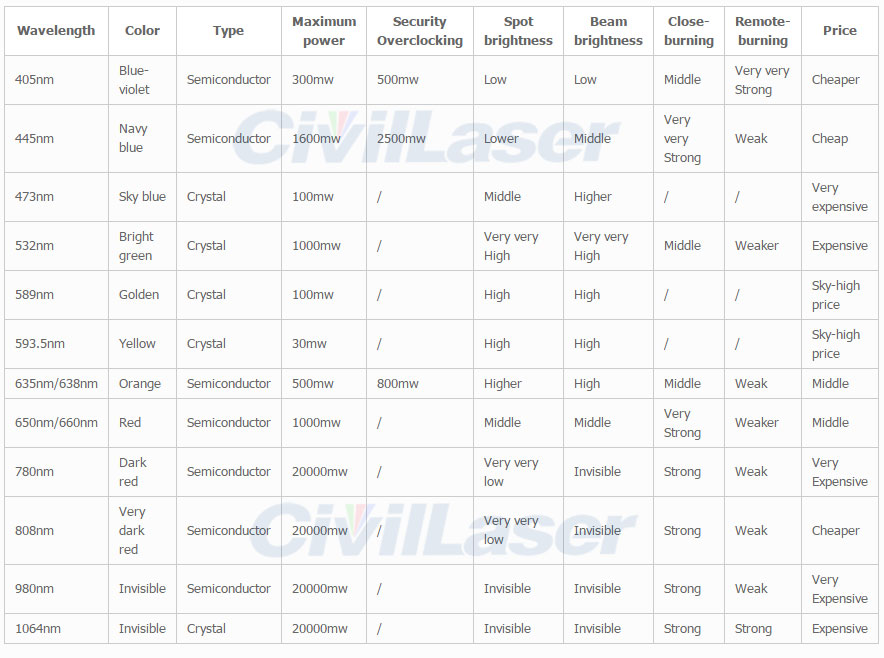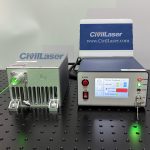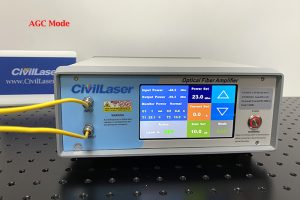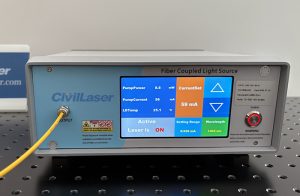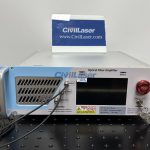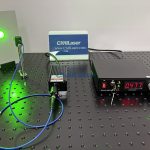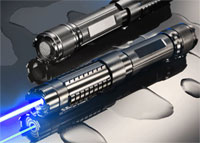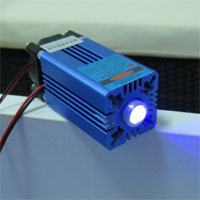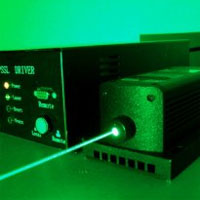Monthly Archives: April 2015
Comparison of brightness of light spot and beam among lasers of different wavelengths
Comparison of brightness of light spot and beam among lasers of different wavelengths
Some beginners often ask me how much the power of 532nm laser equivalent to the brightness of 445nm laser is
The question may not be so easy to answer, because the sensitive degree of each eye to light of different wavelengths is not the same.
And the feelings will be also different in the dark and light conditions .
Scientists have established light / dark vision functions respectively according to the mean value of human vision in the light / dark environments.
When the brightness is more than 3cd/㎡, it is a photopic vision, and pyramidal cells play a major role, peak value of V(λ)will be between 550nm~560nm; when the brightness is less than 0.03cd/㎡, it is a scotopic vision, rod cells play a major role, peak value of V(λ)shifts to short wavelength, equivalent to blue green parts between 500~510nm. Functions with brightness between 3~0.03 also appear in this position.
First let’s discuss the spot brightness. Spot brightness is basically decided by visual function when the power and density are the same.
The function value of 532nm is very high both in light and dark conditions, so it has relatively high brightness.
While the function value of 445nm is quite different in light and dark conditions, theoretically, the brightness is very low in daytime and has a good effect in night.
But, in fact, we also need to consider the factor of the main light.
For example, observe spots in the sunlight.
This is the power distribution of sun light.
Spot brightness also depends on the difference value of light source.
Just like 445nm, it is in a depressed position of solar spectrum, so it has a obvious contrast that the brightness of observation under sunlight has improved.
Next, let’s talk about the beam brightness.
Beam brightness is not only related with vision function but also has a great relationship with the scattering rate.
Even when they have the same power and beam diameter, because the air scattering rate is not the same, their power density will be different.
Atmospheric scattering is divided into various types, some have a stronger scattering to short wave, while some have basically the same scattering to full waves.
So this has enhanced beam brightness of short wave like 445nm once again, but it has also increased the loss of distant 445nm beam, therefore, 445nm beam often looks bright up close and dark at a distance.
Finally, I would like to remind of the safety of yourselves and others.
Ensure that there is no any personnel near light path or new light path that may be generated by reflection.
We are not recommending to observe laser spot up close with naked eyes without any protection.
Bonding crystal, optical cement crystal, separated crystal
Bonding crystal, optical cement crystal, separated crystal
First introduce the principle of 532nm laser
808nm semiconductor laser diode (LD) of pumping source supplies energy to laser crystal
Most of crystals are Nd:YVO4, some are Nd:YAG, both have Nd3+ ions and can produce 1064nm infrared laser
Infrared laser turns into 532nm green light through KTP nonlinear frequency doubling crystal
So, 532nm has 2 crystals, including laser crystals and frequency doubling crystal, the combination method of these two crystals include bonding, optical cement and separation.
Bonding crystal. UV light adhesives are adopted to bond crystals. If the power is relatively large, the crystals will be heated up quickly, then that would be a tragic if adhesives may come unglued after expansion and contraction. The extreme power of agglutination crystal is 200mw and its stability is poor
Optical cement crystal. A special treatment is conducted to contact surface of crystals (estimated to be highly polished), then crystals will be pressed together, crystals after this treatment will not be easy to come unglued as molecular forces integrate and their stability are relatively high, good for lasers below 300mW
Separated crystal. 2 crystals are separately placed for independent cooling, it can withstand a great power. Its weaknesses is that complex adjustment is needed to change the crystal position to achieve the maximum output and it has complex structure, large volume and high cost.
Laser Spatial mode
Laser Spatial mode
The distribution of light intensity on cross section of laser beam is called laser transverse mode. The transverse mode is generally regarded as the laser mode. TEMmn is used to present transverse mode. TEM means transverse electromagnetic wave, both m and n are positive integers, respectively standing for ordinal numbers of the points with zero light intensity on x axis and y axis, called mode ordinal number. The diagram below shows light spots of several different laser beam transverse modes. TEM00 mode is also called as the basic mode, the light intensity of any point in its spot will not be zero. If there is a light intensity of any point in spot on x axis is zero, it is called as TEM10 mode; If a light intensity of any point in spot on y axis is zero, TEM01 mode, and so on, mode ordinal numbers m and n are larger, there are more points with zero light intensity in spots. Laser beam with different transverse modes is called as multimode.
Calculation method of laser divergence angle
Calculation method of laser divergence angle
Firstly, adjust the laser light to parallel light
to measure distant light spot and light spot at aperture
Divergence angle =2arctan ((spot diameter- beam diameter at aperture) / 2 / distance) * 1000All units are mm
For convenience’s sake, you can use the following simple formula
(spot diameter (mm) – beam diameter at aperture (mm))/ distance (m)
Note: the above formula adopts the radian calculation result, the unit is mrad, if using the angle calculation result, please take ×π/180 as the unit
If it is 445nm laser, as all spots are rectangular and have big divergence in ⊥ direction, the beam diameter at aperture is the short side to measure spots at aperture while the beam diameter at aperture is the long side, the same for 635nm laser
Introduction to the characteristics of laser pointers of various wavelengths (colors)
Some laser lovers often ask me which one is better between two lasers of different wavelengths
Here I would like to introduce the characteristics of hand-held lasers of various wavelengths
according to the order from short wave to long wave
Personal Recommendation
For those who like showing off the light beam but don’t want to burn things, I recommend laser 400MW 532nm, it is very bright and you won’t feel 1000mW laser will be much brighter than this.
For those who like to burn things and show off the light beam once in a while, I recommend laser 1.6W 445nm, it is awesome to burn things up close.
For those who like to burn things from a distance, I recommend laser 500MW 405nm, this is absolutely good for lighting matches within 10 meters with ease.








.jpg)
.jpg)
.jpg)
.jpg)
